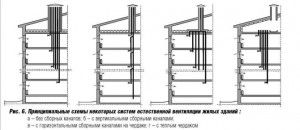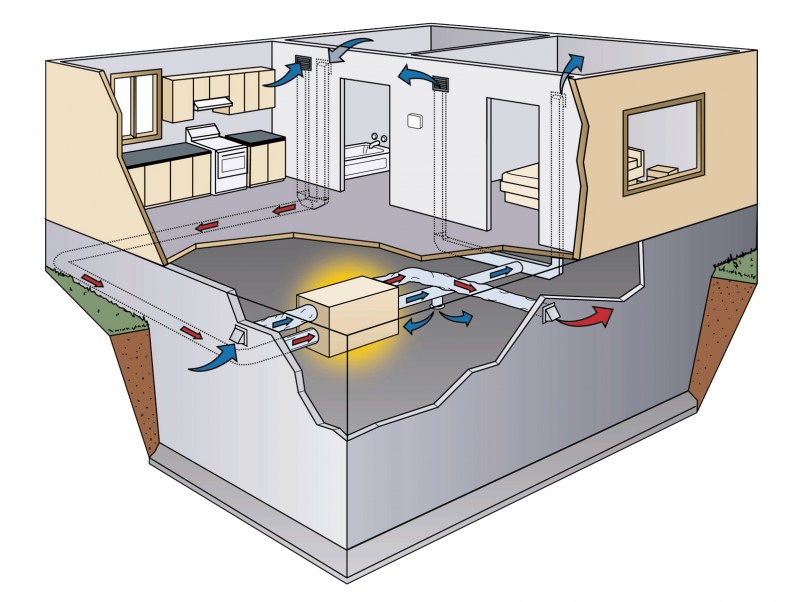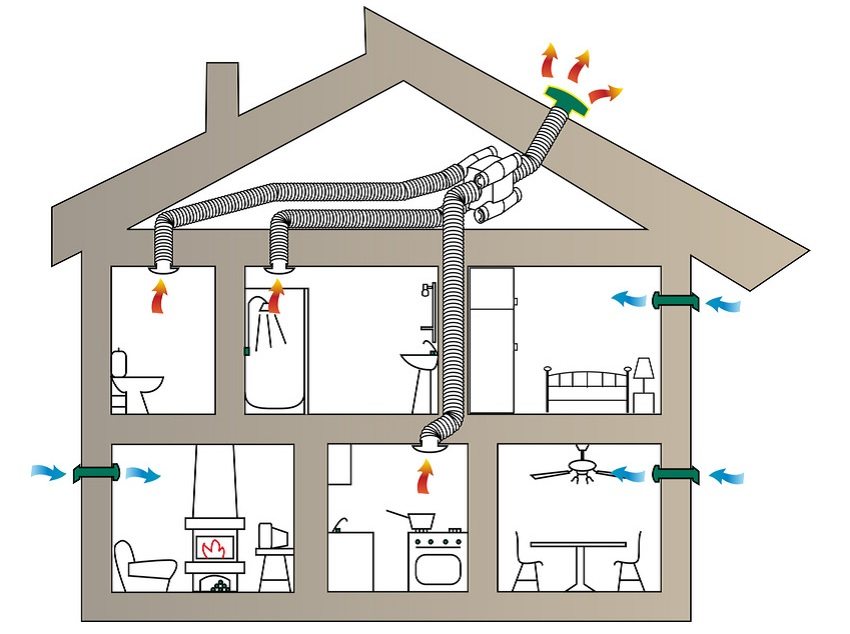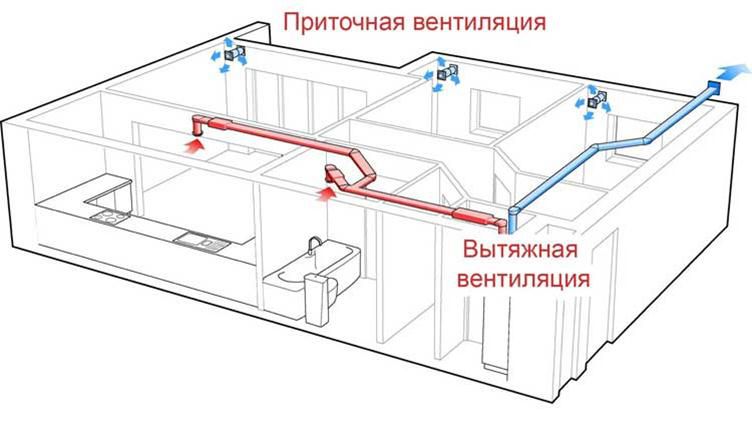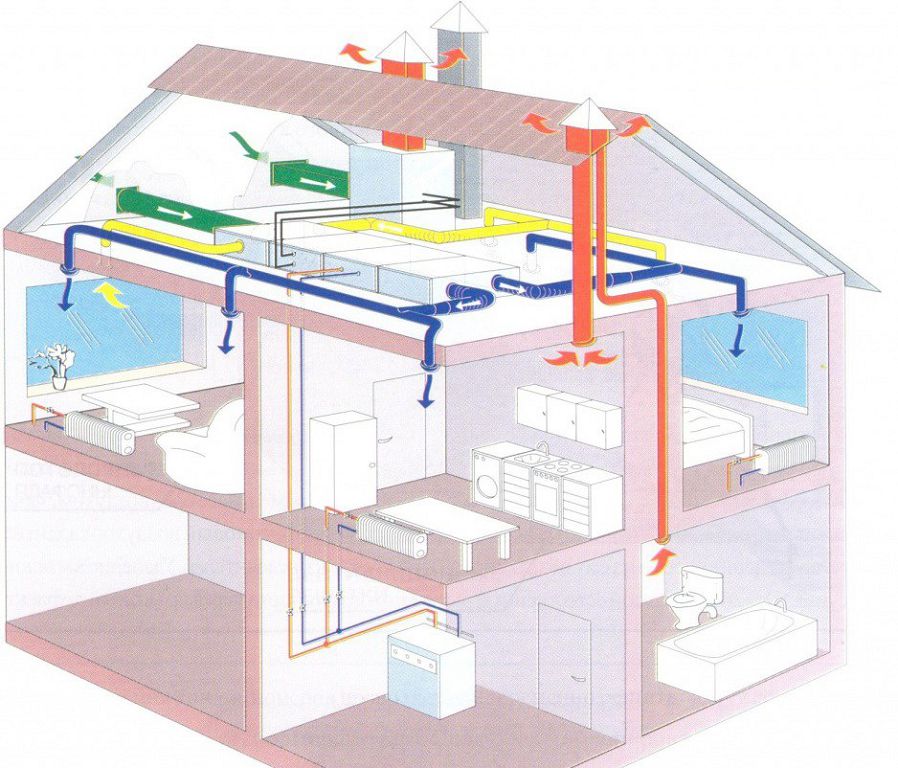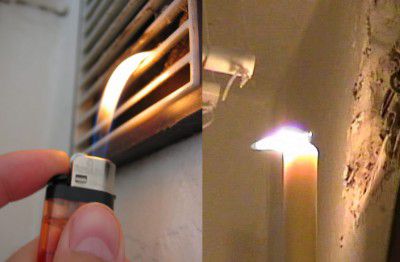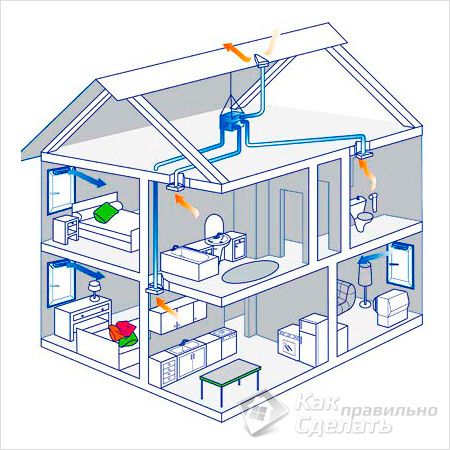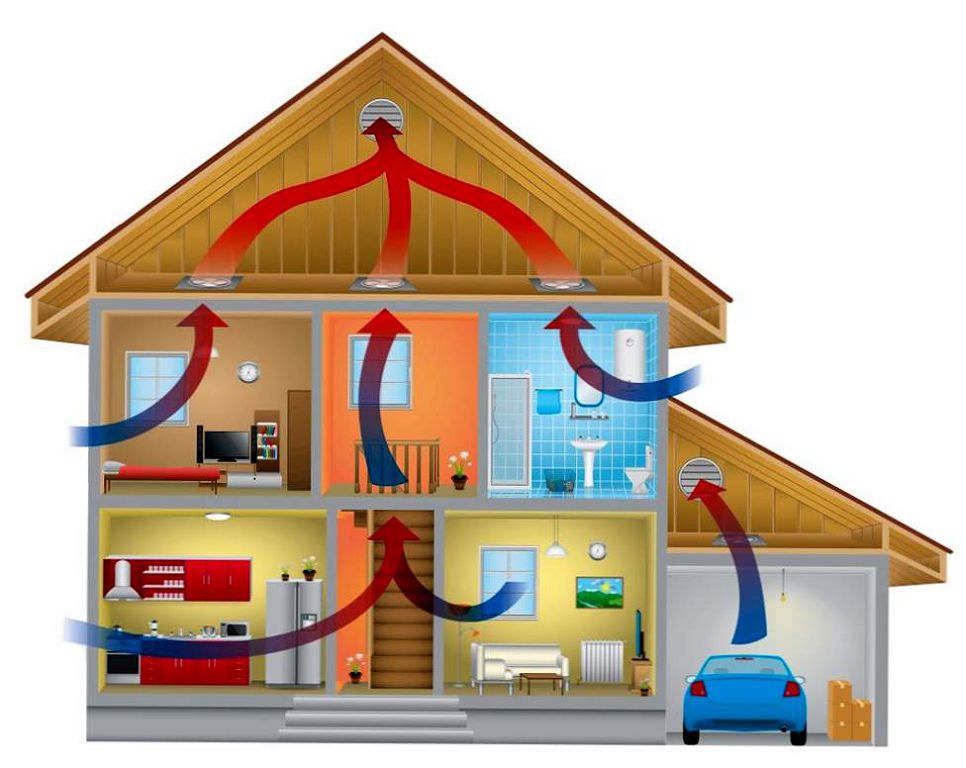Ventilation is one of the most important engineering systems in apartment buildings, which has a significant impact on the health of residents and the convenience of living.
How the ventilation of 5 and 9 storey buildings works
Ventilation scheme for multi-storey buildings The movement of the air flow through the premises should be directed from bedrooms and living rooms to the extraction zones, that is, to the kitchens and toilets;
- The traction force of the ventilation of a 9-storey building should be calculated in such a way that the movement of flows in all rooms, as well as in neighboring apartments, is not disturbed;
- To reduce the cost of heating the supply air, it is necessary to equip the ventilation system in a 5-storey building with a temporary shutdown or standby mode;
- Whatever the weather conditions, ventilation must work and be controlled;
- Ventilation shafts cannot be sources of noise and hum from the street. The humming of the exhaust fans should be minimized.
Requirements for ventilation of panel houses
Both too intensive and weak ventilation of 9-storey buildings are equally bad.
We can talk about excess if in winter heat is removed from the apartment, the air temperature in the apartment drops, residents feel drafts from the windows.
Poor ventilation is characterized by poor removal of air contaminated with odors and gases from toilets and kitchens. In apartments with poor ventilation, high humidity, mold and microbes develop rapidly. The air is not cleaned of dust, chemical vapors from furniture and electrical appliances. Such an atmosphere is dangerous for residents of any age, but children suffer more.
According to the norms, the ventilation system in a 5-storey building must provide the following air exchange:
- The toilet has 50 cubic meters of air per hour;
- In the bathroom 25 cubic meters per hour;
- In the kitchen 90 cubic meters per hour;
- Bedrooms, offices, living rooms 3 cubic meters per 1 sq. meter of floor space per hour.
Providing ventilation in a 9-storey building
The ventilation of 9-storey buildings works according to the following scheme: air enters the apartment through the window and is discharged through the ventilation ducts in the kitchen and in the toilet. To organize the outflow of air in residential buildings, a floor ventilation block is equipped. It is a main pipe, to which two or one collecting ducts come, going to the outlet of the apartment. Satellite channels are connected to the main one every two floors. The ventilation scheme of a 9-storey building provides for the presence of a warm attic and the output of pipes of the 8th and 9th floors directly into the atmosphere. At the same time, the ventilation schemes of a 9-storey building are calculated standard for an outside air temperature of +5 degrees and a complete absence of wind.
Pros and cons of ventilation schemes for 5-storey buildings
Advantages of the ventilation scheme for a 5-storey building:
- Cheap installation work;
- The owner of the apartment can reduce the flow rate by closing the window;
- You can increase traction by inserting fans.
Cons of the ventilation scheme of a 5-storey building:
- Noise, dust gets into the house through the vents;
- Ventilation may be too intense on lower floors and insufficient on upper floors;
- In summer, there is practically no thrust;
- The operation of ventilation is affected by weather conditions.

